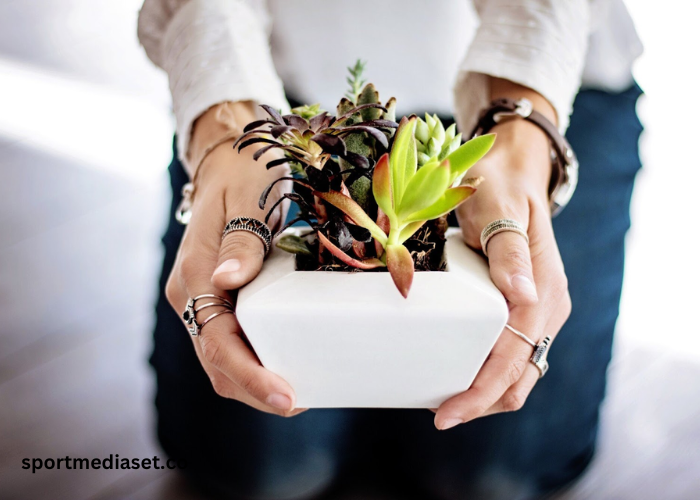If you’re into gardening, aeroponics is a great way to go. Aeroponics basically means growing plants without using soil and getting them all the nutrients through a liquid-based system. It uses much less water than soil gardens, too.
But you may not have the cash right now to buy a fancy aeroponic system. Don’t worry there’s still a DIY way to make one of your own without breaking the bank. Let’s look at how to build a DIY aeroponics garden. Keep reading to learn more.
Gather Materials and Tools
To bring your aeroponics garden to life, you’ll need a set of essential materials and tools. Some key items include:
- Large plastic container or reservoir
- Drill with drill bits
- Water pump
- PVC pipes and fittings
- Spray nozzles
- Timer
- Net cups or mesh pots
- Growing medium (such as coconut coir or vermiculite)
- Nutrient solution
Prepare the Container
Once you’ve selected your container, measure and mark the locations for the holes. The layout will depend on the size of your container and the number of plants you plan to grow. After marking, use your drill to make the holes. The size of the holes should correspond to the size of your net cups or mesh pots.
Next, drill a hole at the bottom of the container for the water pump. This hole should be large enough to fit the outlet of the water pump.
Now, clean the container thoroughly to ensure there’s no debris that could interfere with your aeroponic system. Use warm water and mild soap, rinse it well, and let it dry completely.
Install the Water Pump and Timer
Ensure the water pump is properly connected to the power supply. The outlet of the pump should line up with the hole you drilled at the bottom of the container. Make sure the pump is securely fastened to ensure it operates smoothly.
Connect your timer to the water pump following the instructions provided by the manufacturer. Set the timer to mist the roots for about 15 minutes every hour. This interval may vary depending on the specific needs of your plants, but it’s a good starting point.
Test your setup to make sure the timer activates the pump as expected. Adjust the settings as necessary to ensure your plants will receive the optimal amount of nutrients and hydration.
Create the PVC Pipe System
Once your PVC pipes are cut to size, use a drill to create evenly spaced holes along the length of each pipe. These holes are where you will attach the spray nozzles that distribute the nutrient solution.
Next, assemble your PVC pipes using the fittings to form a grid. Your grid should fit comfortably inside your container, aligning with the holes you drilled for the net cups or mesh pots.
Attach the spray nozzles firmly into the drilled holes on the PVC pipes. The nozzles should point towards where the roots of your plants will be suspended.
Finally, connect your assembled PVC grid to the water pump outlet. Ensure a secure and leak-free connection.
Add Growing Medium and Net Cups
Take your chosen growing medium – it could be coconut coir, vermiculite, or another porous material. Fill up each of your net cups or mesh pots with this growing medium. Ensure that it reaches the bottom but does not overflow.
After filling, place the net cups or mesh pots in the holes you previously drilled on top of your container. They should fit snugly to prevent the plants from shifting or tipping over. This step completes your aeroponics setup, bringing you one jump closer to growing your own plants successfully.
Mix Nutrient Solution
Start by choosing a high-quality nutrient solution designed for hydroponics or aeroponics. Next, carefully read the instructions on the product label. Most nutrient solutions will require you to mix a certain amount with water.
Fill your reservoir with water up to the level of the water pump intake. Then, add the nutrient solution to the water. It’s important to add the nutrient solution after the water to prevent it from concentrating at the bottom.
Stir the mixture well until the nutrient solution is fully dissolved. This ensures that your plants receive balanced nutrition. Once the solution is prepared, connect the pump system to distribute it to the plants.
Lastly, regularly check the nutrient levels in your reservoir. As your plants grow, they will consume nutrients and water. Replenish the solution as needed, always following the manufacturer’s instructions.
Plant Your Seeds or Seedlings
Begin by carefully placing your seeds or seedlings into the net cups, which have been filled with your chosen growing medium. Always handle your seeds or seedlings gently to avoid any damage.
If you’re using seeds, place a few within the growing medium in each net cup. Make a small hole, drop the seeds in, and then lightly cover with more medium.
If you’re using seedlings, make sure the roots are touching the growing medium. Ensure that the seedlings are well-spaced; this maximizes airflow and encourages growth.
Turn on the System
Start by plugging in the timer to your power supply. Ensure that it’s set to your preferred intervals for misting. This is typically 15 minutes every hour, but feel free to adjust based on your plant’s needs.
The misting process gives your plants essential nutrients and oxygen. It also helps maintain an ideal level of humidity within your garden. This fosters a conducive environment for your plants to flourish.
Remember, it’s important to regularly check your system once it’s running. Make sure the timer triggers the water pump properly, and the mist adequately nourishes the roots of your plants. Adjustments may be necessary as you learn more about what your particular plants need. Clean and sanitize your DIY aeroponics system regularly for optimal plant health.
Reaping the Benefits of Your DIY Aeroponics Garden
Building your own DIY aeroponics garden is an exciting venture that combines creativity, science, and a green thumb. It is a cost-effective and efficient way of growing plants, perfect for urban gardeners or anyone looking to try out aeroponics gardening.
With a little bit of patience and maintenance, you can enjoy a bountiful harvest from your very own aeroponics garden. So why not give it a try and see the results for yourself? Happy growing!
We hope this guide has been a good resource. For more great content, head over to our blog.




